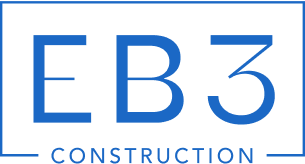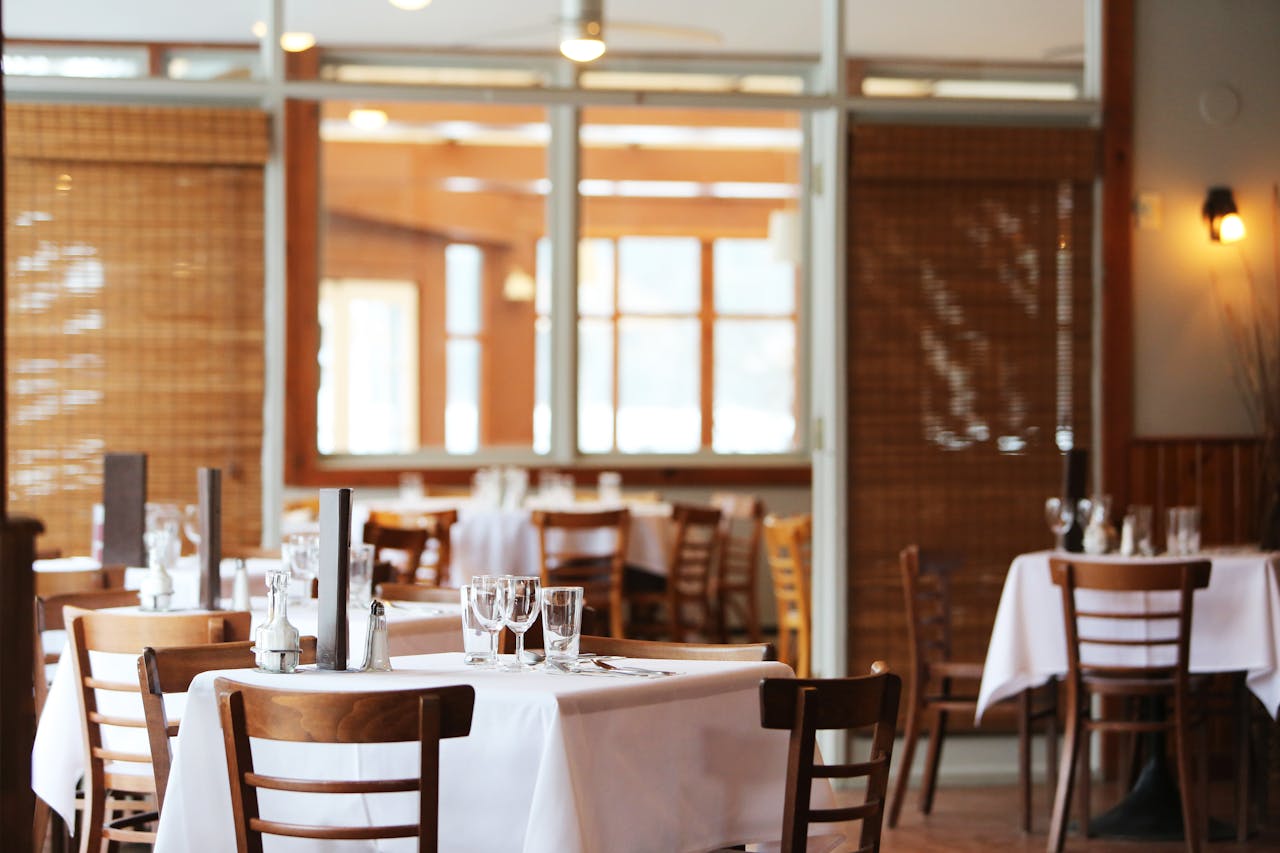Picture investing thousands in restaurant equipment only to discover your chosen site prohibits food service. This nightmare scenario strikes more restaurant entrepreneurs than you might expect.
Zoning for restaurants determines where food service establishments can legally operate and under what specific conditions. Municipal zoning ordinances establish rules governing everything from permitted uses and building design to parking requirements, signage restrictions, noise limits, and operating hours. We coordinate these regulatory considerations with every restaurant project to ensure compliance from day one. The scope ahead examines how local codes control restaurant operations, district classifications, approval processes, common challenges, and building a compliant foundation.
What Do Local Zoning Codes Control For Restaurants?

Municipal zoning ordinances establish the legal framework that determines where restaurants can operate and how they must function. These regulations touch nearly every aspect of restaurant development, from initial site selection through daily operations.
Zoning Districts And Land Use Classifications
Local governments divide municipalities into distinct zoning districts that dictate permitted land uses. Restaurants typically fall under commercial zoning categories, though the specific designation varies by jurisdiction. Residential districts generally prohibit restaurant uses, while industrial zones may allow limited food service operations.
Mixed-use districts blend residential and commercial activities, often creating favorable conditions for restaurants that serve both nearby residents and business customers. Each zoning district carries specific regulations about building types, operational intensity, and compatibility with surrounding land uses.
Permitted Use Designations And Approval Requirements
Zoning codes specify whether restaurants operate “by right” or require special approval within each district. Some areas permit all restaurant types without additional review, while others distinguish between quick-service and full-service establishments. Fast-food restaurants may face different restrictions than fine dining venues due to traffic generation and operational patterns.
Conditional use permits or special exceptions may be required in certain zones, adding time and cost to the approval process. These permits typically involve public hearings and detailed operational plans that demonstrate compatibility with neighboring properties.
Building Codes And Design Standards
Construction and renovation projects must comply with building codes that address safety, accessibility, and sometimes aesthetic requirements. Fire safety systems, emergency exits, and accessibility standards under the Americans with Disabilities Act apply to all restaurant construction. Some districts impose additional design requirements for facade materials, architectural styles, or building orientation to maintain neighborhood character.
Kitchen ventilation, grease management, and structural modifications for commercial equipment often require specialized permits and inspections. We coordinate with building officials early to identify code requirements that affect layout and construction costs.
Parking Requirements And Traffic Management
Most zoning codes establish minimum parking ratios based on restaurant seating capacity or floor area. These requirements can significantly impact site feasibility, as parking demand often exceeds what neighboring retail or office uses require. A typical full-service restaurant might need one parking space per 75 square feet of dining area, while fast-food establishments face even higher ratios due to customer turnover.
Loading space requirements ensure adequate areas for deliveries without blocking traffic flow. Drive-through facilities, where permitted, must meet specific lane dimensions and queuing space standards to prevent conflicts with parking and pedestrian circulation.
Signage Regulations And Visibility Controls
Local signage ordinances regulate the size, type, height, and placement of restaurant signs to maintain aesthetic standards and traffic safety. These rules often limit total sign area, restrict flashing or digital displays, and require setbacks from property lines. Monument signs, building-mounted signs, and window graphics each face different restrictions.
Illumination standards control lighting intensity and hours of operation to minimize impacts on residential areas. We help restaurant owners design signage programs that maximize visibility while meeting local requirements.
Noise And Odor Restrictions
Zoning codes typically include performance standards that limit noise levels and odor emissions to protect nearby properties. Mechanical equipment like HVAC systems, exhaust fans, and refrigeration units must meet specific decibel limits, especially during nighttime hours. Cooking odors require proper ventilation and filtering systems to prevent nuisance complaints.
Live entertainment, outdoor music, or patio dining may face additional restrictions in areas near residential zones. Sound insulation and strategic equipment placement help restaurants operate within these limits.
Operating Hours And Activity Limitations
Many zoning ordinances restrict restaurant operating hours to reduce traffic and noise impacts in residential areas. These limitations vary by district type and proximity to sensitive uses like schools or housing. Late-night operations, alcohol service, and outdoor dining often face stricter time constraints.
Some jurisdictions impose additional restrictions on delivery operations, trash collection schedules, or outdoor storage to maintain neighborhood compatibility. Understanding these operational limits helps restaurant owners plan staffing, service hours, and business models that align with local requirements.
How Do Districts And Special Rules Affect Site Selection And Design?
Different zoning districts create distinct opportunities and constraints for restaurant development. We evaluate how each district type affects construction feasibility and operational capacity during site selection.
Permitted Use Designations
Not every zone permits restaurant operations. Some residential districts prohibit commercial food service entirely, while others may allow only limited formats like home-based catering. Industrial zones typically exclude restaurants unless they serve manufacturing workers.
Commercial districts offer the most flexibility, but even these vary in scope. Neighborhood commercial zones might restrict restaurant size or limit service types to protect residential character. Downtown districts often encourage larger establishments and diverse formats.
Commercial District Classifications
Commercial classifications determine what restaurant formats work best in each location. Neighborhood commercial districts favor smaller, locally-oriented establishments that serve surrounding residents. These zones often limit floor area and may restrict drive-through services to maintain pedestrian-friendly streetscapes.
Downtown business districts typically allow larger restaurants, entertainment venues, and more intensive uses. Highway commercial zones accommodate drive-through facilities and larger footprints but may require extensive parking and setbacks from the roadway.
Bulk Standards And Physical Constraints
Bulk standards control the physical relationship between buildings and property lines. Setback requirements determine how close we can position the building to streets and neighboring properties, directly affecting available patio space and building footprint options.
Height restrictions influence multi-story restaurant concepts and rooftop dining potential. Parking minimums often require one space per 150 square feet of restaurant area, which can consume significant site area and limit dining capacity. Loading space requirements affect service access and may mandate specific truck maneuvering areas.
Lighting and signage limits shape exterior design choices. Some districts restrict illuminated signage or limit sign sizes to preserve neighborhood character, affecting branding visibility and facade design options.
Special Zoning Considerations
Many cities impose additional restrictions targeting specific restaurant types or protecting sensitive areas. Fast-food density caps prevent oversaturation in certain neighborhoods, while distance requirements may prohibit restaurants within specific footage of schools or residential zones.
Drive-through bans in pedestrian-oriented districts affect site layout and service models. Some overlay districts add historic preservation requirements or design standards that influence construction costs and architectural choices.
Mixed-Use Districts And Nonconforming Uses
Mixed-use districts blend residential and commercial activities, often creating favorable conditions for restaurants by combining customer base proximity with regulatory flexibility. These zones typically allow ground-floor commercial with residential above, maximizing development potential.
Existing nonconforming restaurants may continue operating under grandfathering provisions, but expansion or major renovations often trigger compliance with current codes. We verify grandfathering status early since these properties may face restrictions on modifications or change of ownership.
Variance And Special Permit Options
When strict code compliance creates practical hardships, variances provide relief for specific requirements. Common restaurant variances address parking shortfalls, setback encroachments, or signage needs that exceed standard limits.
The variance process involves public hearings, neighbor notification, and demonstration that relief aligns with the zoning ordinance’s overall intent. We recommend identifying potential variance needs during initial site evaluation since approvals can take three to six months and add $10,000 to $55,000 to project budgets.
What Steps Should You Take For A Zoning Analysis And Approvals?

We approach zoning analysis and approvals through a systematic process that starts early and builds methodically toward permit issuance. At EB3 Construction, our experience with restaurant projects has taught us that rushing this phase creates delays later, so we guide developers through each step with clear timelines and expectations.
Identify Jurisdiction And Authority
The first step involves confirming which government level controls zoning at your site. Municipal codes typically take precedence, but county regulations may apply in unincorporated areas or for specific uses like liquor service. We start with the city or town planning department since they handle most commercial zoning decisions.
Contact the local planning office directly to confirm jurisdiction boundaries. Some sites sit near municipal borders where overlapping authorities create confusion. We verify which codes apply before moving to research, since using the wrong ordinance can invalidate weeks of analysis.
Research Zoning Maps And Code Text
With jurisdiction confirmed, we dive into the specific zoning classification for your site. Most municipalities provide online zoning maps that show district boundaries and permitted uses. We review both the map designation and the written code text, since maps sometimes lag behind recent amendments.
Look beyond the basic zone designation to identify overlay districts, historic designations, or special development areas. These additional layers often impose extra requirements for signage, architecture, or operational hours. We also check for pending rezoning applications or master plan updates that could affect your site.
Consult With Planning Staff
Municipal planning staff provide invaluable insight into local interpretation of zoning codes. We schedule meetings to discuss specific restaurant concepts, hours of operation, outdoor seating plans, and any unique operational elements. Staff can clarify ambiguous code language and identify potential issues before formal submission.
Prepare specific questions about seating capacity, kitchen exhaust requirements, delivery access, and waste management. Planning staff often know about upcoming code changes or neighborhood concerns that could influence approval timing. We document these conversations to reference during formal applications.
Investigate Liquor License Regulations
Alcohol service involves separate regulatory layers that intersect with zoning approvals. Many jurisdictions maintain quotas on liquor licenses or impose moratoriums in certain areas. Distance requirements from schools, places of worship, or residential zones can eliminate otherwise suitable sites.
We research both availability and local approval processes early in site selection. State liquor authorities often require zoning confirmation before processing applications, creating dependencies that affect project timelines. Some areas require community board review, adding months to the approval process.
Engage With Local Officials
Beyond planning staff, we connect with city council members, zoning board members, or neighborhood liaisons who influence approval decisions. These officials provide context about community priorities, upcoming developments, or policy changes that could affect restaurant projects.
Ask about planned infrastructure improvements, traffic studies, or economic development initiatives in the area. Officials sometimes know about competing projects or neighborhood concerns that haven’t reached formal planning discussions. Building these relationships early can smooth the path through public hearings if needed.
Prepare Submission Packages
Zoning permit applications require comprehensive documentation that varies by jurisdiction. Typical submissions include site plans showing property boundaries and building placement, floor plans indicating dining areas and kitchen layout, operational descriptions covering hours and service style, parking plans demonstrating code compliance, and detailed operational schedules.
We coordinate with architects and engineers to ensure technical drawings meet local standards. Many jurisdictions require professional stamps on certain documents, particularly for new construction or significant modifications. Clear, complete submissions reduce review time and revision requests.
Address Variance Requirements
When strict code compliance proves impractical or unnecessarily restrictive, variance relief may provide flexibility. This process typically requires engineered plans, public hearings, and negotiations with zoning boards. Variance applications must demonstrate that relief aligns with the zoning ordinance’s underlying intent.
Budget approximately 3 to 6 months for variance approval processes, with costs ranging from $10,000 to $55,000 depending on complexity and professional requirements. Public hearings allow community input, so we prepare clear presentations explaining how the project benefits the neighborhood while addressing potential concerns.
Plan Project Timeline
Zoning analysis should begin before lease execution, allowing time to identify deal-breaking issues. Permit submission typically occurs after securing site control, with processing times of 1 to 3 months for standard applications. Review and approval phases can extend 1 to 6 months depending on complexity and hearing schedules.
Construction phases generally require 2 to 6 months, followed by final inspections and licensing that take 1 to 2 months. We build buffer time into each phase since delays in zoning approvals cascade through the entire project schedule. Early starts prevent compressed construction timelines that increase costs and reduce quality.
Coordinate Related Permits
Zoning approvals often trigger requirements for certificates of occupancy or change of use permits. We coordinate these applications to run in parallel with building permits when possible, compressing overall approval timelines. Building departments typically require zoning compliance confirmation before issuing construction permits.
Some jurisdictions allow conditional approvals that permit construction to begin while final zoning details are resolved. We evaluate these options carefully since starting work under conditional permits carries risk if final approvals include unexpected conditions or modifications.
What Common Zoning Challenges Should Restaurant Projects Plan For?
Restaurant development encounters predictable zoning obstacles that can delay openings or increase costs. We address these challenges systematically to keep projects on schedule and within budget.
Parking Minimums Create Design Constraints
Municipal codes typically require one parking space per 150 square feet of restaurant space, which can consume significant site area. High parking ratios force developers to reduce dining capacity or outdoor seating options. We explore shared parking agreements with adjacent businesses during initial site evaluation.
Shared parking works best when businesses have complementary peak hours. For example, a restaurant can share spaces with an office building that empties in the evening. These arrangements require formal agreements and municipal approval, so we initiate discussions early in the planning process.
Design Restrictions Shape Architectural Decisions
Setback requirements, height limits, and facade regulations can conflict with restaurant branding and operational needs. Some districts mandate specific architectural styles or materials that may not align with the intended concept. We coordinate with architects during schematic design to ensure compliance while preserving the restaurant’s identity.
Building orientation and window placement become critical when facade transparency requirements exceed 40 percent. We position dining areas strategically to meet these standards while maintaining kitchen efficiency and customer privacy. Front setbacks may limit signage visibility, requiring creative solutions for wayfinding.
Noise Limits And Operating Hours Affect Business Models
Late-night service and live entertainment can trigger municipal noise ordinances that restrict decibel levels and operating hours. We install sound insulation during construction and position noisy equipment away from property lines. Strategic placement of HVAC units and delivery areas minimizes neighbor complaints.
Music venues and bars face additional scrutiny from planning commissions. We document noise mitigation measures in permit applications and work with acoustic consultants when necessary. Some districts prohibit amplified music entirely, which affects entertainment programming.
Signage Controls Impact Brand Visibility
Sign size, height, and illumination restrictions vary significantly between districts. Historic areas often require specific materials or prohibit certain lighting types. We coordinate branding elements with local design review boards before finalizing exterior concepts.
Monument signs may require special permits and must meet setback requirements. Digital displays face additional restrictions on brightness and changing frequency. We verify signage allowances during site selection to avoid costly redesigns later.
ADA Compliance Intersects With Zoning Requirements
Accessibility standards affect parking ratios, entrance design, and interior circulation. Restaurants must provide accessible routes to all dining areas, including elevated sections or outdoor patios. We ensure that ramps and accessible parking meet both ADA and local zoning requirements.
Service counter heights and restroom locations must comply with accessibility guidelines while fitting within zoning setbacks. We coordinate these elements during design development to avoid conflicts between different regulatory requirements.
Variance Processes Add Time And Cost Exposure
When strict code compliance proves impractical, variance applications provide relief through public hearings and planning commission review. These processes typically require engineered drawings, traffic studies, and neighbor notification. Variance approvals add three to six months to project timelines and can cost $10,000 to $55,000 in professional fees.
We build variance contingencies into project schedules and budgets when site constraints make compliance challenging. Early consultation with planning staff helps identify potential variance needs before significant design investment occurs.
Conclusion: Build Your Restaurant On A Compliant Foundation

Zoning for restaurants requires early attention and thorough preparation. We approach every project knowing that permits, approvals, and regulatory compliance set the foundation for successful construction and operations.
The verification process starts before lease signing and continues through opening. We confirm permitted uses, decode bulk standards, and map special requirements during site evaluation. Variances, liquor licensing, and planning approvals affect both timeline and budget, so we build these considerations into project schedules from day one. Working with planning staff and qualified consultants helps navigate public hearings and regulatory requirements efficiently.
Ready to ensure your restaurant project meets all zoning requirements? Contact EB3 Construction to discuss your compliance strategy.




